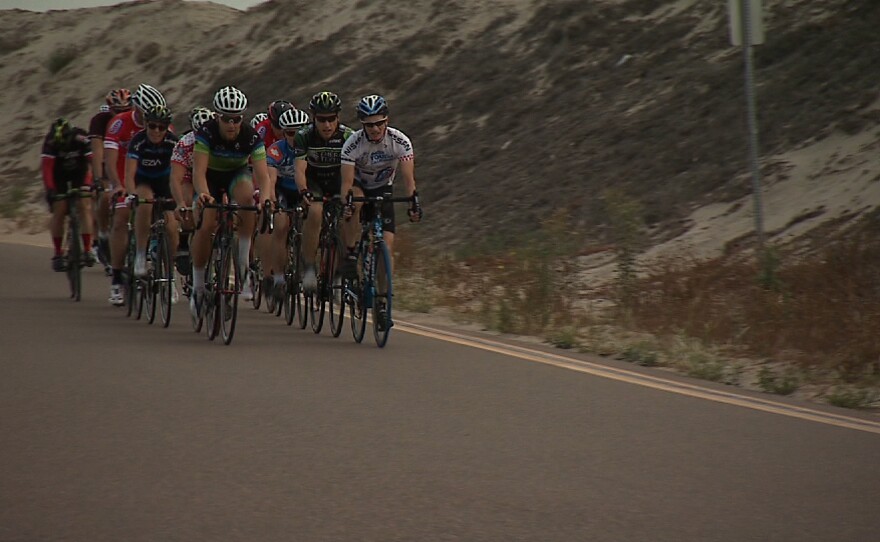A month after a suspected drunken driver went the wrong way on Fiesta Island and plowed into eight bicyclists, sending six to the hospital, the city of San Diego is taking steps to make the island safer.
The city will add multiple one-way signs, wrong-way signs and 25 mph speed limit signs along the road that circles the island in Mission Bay. It will also add share the road signs and "sharrows," arrows on the pavement that remind drivers to share the road with cyclists. Signs signaling no left turn and one-way-only signs will be installed at the shortcut road from the San Diego Youth Aquatic Center, near where the crash occurred.
City workers will also trim bushes by the aquatic center shortcut and add bright orange delineators, which are thin traffic cones.
The changes will be made by mid-October, said Craig Gustafson, a spokesman for Mayor Kevin Faulconer.
City workers are reviewing the total number of signs that will be added, Gustafson said. The changes won't require requests for additional funding, he said.
The driver who hit the cyclists pleaded not guilty to felony charges of driving under the influence and possession of methamphetamine.
Stephen Banister, the head of the Triathlon Club of San Diego, and representatives from other San Diego bike groups met last week with Ian Clampett from Faulconer's office, other city staff members and the head of the Mission Bay Park Committee to discuss the changes.
Banister said the city reached out to him after the crash, and that the changes show the city is taking safety seriously. He thinks the signs will help make it more clear which way traffic should flow.
"Whether you're a pedestrian or a motorist or on a bike, you can get an idea of what direction you should be going if it isn't obvious already," Banister said. "It showed they put a lot of thought into it and were willing to put resources into making it safer."
While Fiesta Island is often a favorite spot for cyclists because traffic is minimal, Banister said it has never been ideal.
"It's just one of the few places where people feel safe. But with the accident, it makes you think maybe this isn't the best place, maybe I should be going somewhere else," he said.
The Triathlon Club used to host 12 races on Fiesta Island each year, which required the road to be closed from 6 to 9 a.m. But the city cut back on the number of road closures, citing complaints from other groups that use the island, so this year Banister's group was limited to three races.
At last week's meeting with Banister and others, city staff members said they would look into installing a traffic counter at the entrance to the island that could keep track of how heavily it's being used, Banister said.
"The (Mission Bay Park) Committee has a hard time with making decisions because they base it all on complaints rather than who uses the island and how it's used," he said. "The suggestion we made was to put a counter out there that differentiates between cars and cyclists so they can come up with real numbers about who uses the island and how much."
A report by KPBS found that although the city made the road closure change citing complaints, the city did not keep a record of those complaints, and KPBS wasn't able to find anyone who complained.







